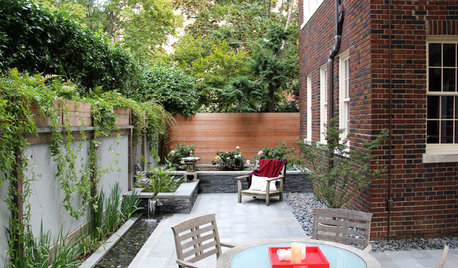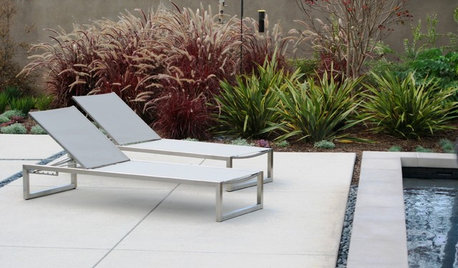why won't my grass grow?
ncdirtdigger
14 years ago
Related Stories

PATIOSPatio Details: Dog Won’t Trample the Plants With This Design
An Asian-inspired backyard redo adds clean lines, a new water feature and a sense of spaciousness — with room for a large beloved dog
Full Story
LIFEYou Said It: ‘Put It Back’ If It Won’t Help Your House, and More Wisdom
Highlights from the week include stopping clutter from getting past the door, fall planting ideas and a grandfather’s gift of love
Full Story
REMODELING GUIDESYou Won't Believe What These Homeowners Found in Their Walls
From the banal to the downright bizarre, these uncovered artifacts may get you wondering what may be hidden in your own home
Full Story
KIDS’ SPACES7 Kids’ Bedroom Decor Ideas That Won’t Break the Bank
Take an economical approach to decorating your child’s room with these DIY ideas
Full Story
BATHROOM MAKEOVERS9 Powder Room Splurges You Won’t Regret
Make a big statement in your smallest room
Full Story
GARDENING GUIDESGreat Design Plant: Purple Needle Grass, California’s State Grass
The long-lived, drought-tolerant Stipa pulchra is as admired for its benefits as for its good looks
Full Story
MORE ROOMS14 Bedrooms That Grow With Kids
You won't have to start from scratch every three years with these modern and eclectic kid's bedroom designs
Full Story
NURSERY IDEASHow to Decorate a Nursery to Grow With Your Baby
A neutral palette, convertible furniture and classic patterns mean you won't have to redecorate for the phases of childhood
Full Story
PURPLE FOLIAGEGreat Design Plant: Purple Fountain Grass
Easy come, easy grow — give this low-maintenance grass pride of place in your garden
Full Story
GARDENING GUIDES10 Top California Native Plants, Trees and Grasses
Enjoy a fuss-free, water-wise garden in the Golden State by growing plants naturally in tune with the climate and wildlife
Full Story





garycinchicago
Kimmsr
Related Professionals
West Milford Landscape Architects & Landscape Designers · Chattanooga Landscape Architects & Landscape Designers · Alpharetta Landscape Contractors · Broomfield Landscape Contractors · East Hanover Landscape Contractors · Hoover Landscape Contractors · New Brighton Landscape Contractors · Selden Landscape Contractors · Snoqualmie Landscape Contractors · West Chester Landscape Contractors · Wauconda Driveway Installation & Maintenance · Corona Fence Contractors · Hammond Fence Contractors · Olean Fence Contractors · Walnut Fence ContractorsncdirtdiggerOriginal Author
Kimmsr
dchall_san_antonio